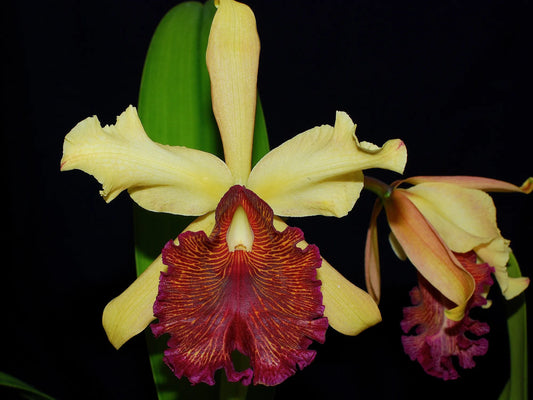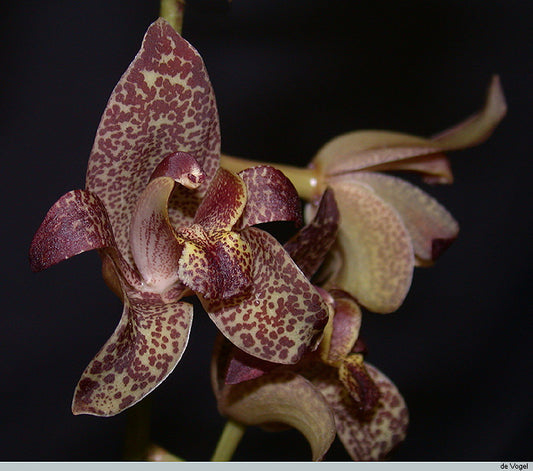Close
Sidebar
Recent Tips & Tricks
Neofinetia Orchid Care Guide
20 April 2025
Chiloschista & Dendrophylax Orchid Care (Ghost Orchids)
20 April 2025
How to successfully grow Schoenorchis fragrans.
20 April 2025
How to successfully grow Catasetinae varieties.
10 June 2023
Featured Products
Cattleya dowiana aurea
This medium-sized, epiphytic orchid, often referred to as Cattleya aurea, is native specifically to the north of Colombia. It is prized for having larger flowers and a more intense golden coloration than the Costa Rican form of C. dowiana, with highly intricate veining on its crimson-purple...
- $50.00
- $50.00
- Unit price
- / per
Dendrobium insigne (Fragrant)
Dendrobium insigne is found in Papua and New Guinea, Queensland Australia and surrounding islands. It grows on trees and on the tips of small branches of mangrove trees at elevations of 0 to 600 meters above sea level. The Splendid Dendrobium blooms at any...
- $150.00
- $150.00
- Unit price
- / per
Grammatophyllum stapeliiflorum
Grammatophyllum stapeliiflorum is a medium-sized, warm-growing, epiphytic orchid from Southeast Asia known for its unique, waxy, spotted flowers that hang on pendulous spikes, resembling species from the Stapelia genus but with a different fragrance. It thrives in bright, warm conditions, needing excellent air circulation...
- $35.00
- $35.00
- Unit price
- / per
Phal. lobbii ‘Pink with Yellow heart’ x Anna Larati Soekardi
This hybrid combines the delicate charm of Phal. lobbii 'Pink with Yellow heart' with Anna Larati Soekardi, resulting in a striking miniature specimen. With its promising characteristics and exceptional quality, this cultivar demonstrates considerable potential for horticultural recognition and distinction among serious collectors. Plants...
- $29.50
$35.00- $29.50
- Unit price
- / per














